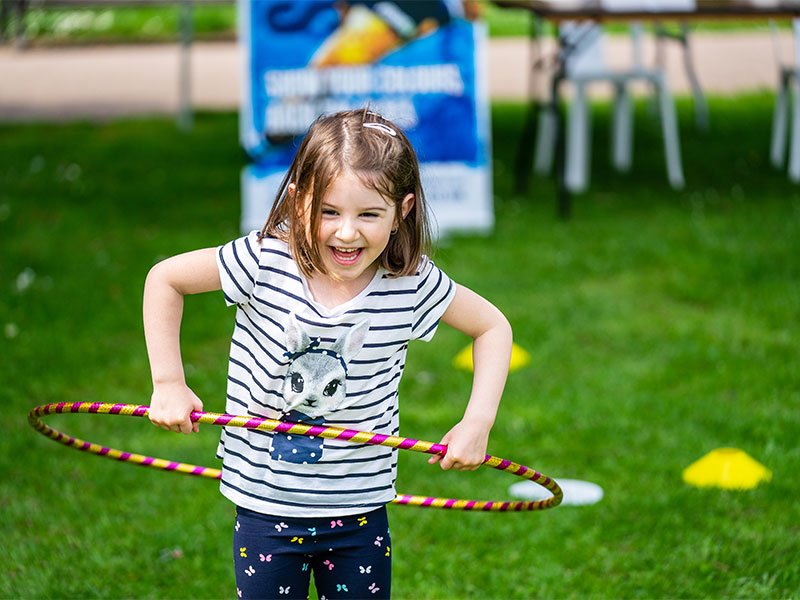Here’s something that might blow your mind – while you’re worrying about screen time, tutoring schedules, and extra homework, your child’s brain is literally crying out for something much simpler: movement. Not structured exercise classes or competitive sports necessarily, just good old-fashioned active play. The importance of active play in childhood goes way beyond burning energy or preventing obesity. We’re talking about fundamental brain architecture, the kind of neural connections that determine how your child will think, learn, and solve problems for the rest of their life.
Think about it – while your neighbor’s kid is sitting through another hour of academic tutoring, your child could be outside building stronger executive functions, better memory, enhanced creativity, and superior problem-solving abilities simply by playing tag or building a fort. Sounds too good to be true? The science says otherwise, and it’s time parents understood just how powerful movement really is for developing brains.
The Neuroscience Behind Active Play: What’s Really Happening in Your Child’s Brain
How Movement Builds Better Brains?
When children engage in active play, they’re not just moving their bodies – they’re literally constructing their brains. Play is not frivolous; it is brain building, with both direct and indirect effects on brain structure and functioning.
Every time your child runs, jumps, climbs, or engages in coordinated movement, their brain responds by strengthening existing neural pathways and creating new ones. This process, called neuroplasticity, is most powerful during childhood.
Key Brain Changes During Active Play:
- Increased blood flow delivering oxygen and nutrients
- Release of brain-derived neurotrophic factor (BDNF) promoting neuron growth
- Strengthened connections between brain regions
- Enhanced myelination improving signal transmission speed
Cognitive Functions Enhanced:
- Executive function (planning, decision-making, impulse control)
- Working memory and attention span
- Processing speed and cognitive flexibility
- Spatial awareness and coordination
The Executive Function Connection
Children who engaged in physical activity demonstrated better executive functions in terms of inhibition and better planning abilities than children who did not engage in any physical activity.
Executive functions are the brain’s management system, controlling everything from staying focused during homework to managing emotions during conflicts. Active play is one of the most powerful ways to develop these critical skills.
Executive Function Components Developed Through Play:
- Inhibitory Control: Stopping inappropriate responses, resisting distractions
- Working Memory: Holding and manipulating information mentally
- Cognitive Flexibility: Adapting to changing rules or situations
- Planning and Organization: Setting goals and determining steps to achieve them
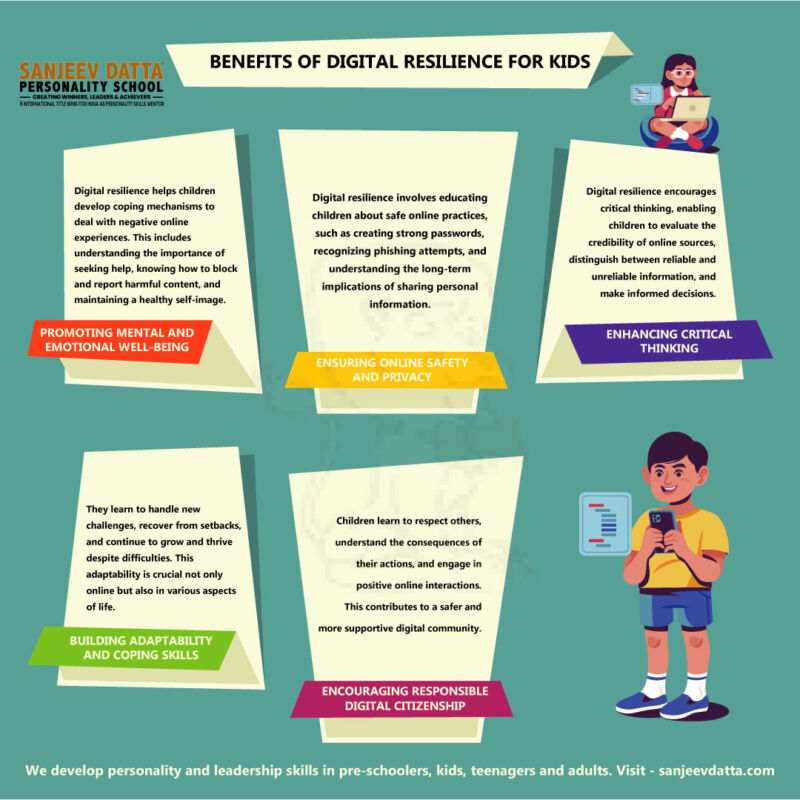
Physical Activity and Academic Performance
Children who are more physically active perform better academically and have better memory and attention. This isn’t correlation – it’s causation, proven through numerous controlled studies.
Academic Benefits of Active Play:
- Improved reading comprehension and math skills
- Better test scores across all subjects
- Enhanced focus during classroom instruction
- Faster information processing and recall
Age-Specific Benefits: How Active Play Supports Development from 5-14
1. Early Elementary (Ages 5-8): Foundation Building
Young children’s brains are in a critical period of development where active play establishes foundational neural networks that support all future learning.
Developmental Milestones Supported:
- Gross motor skill refinement (running, jumping, climbing)
- Fine motor coordination development
- Spatial awareness and body control
- Social skill foundations through cooperative play
Ideal Active Play Activities:
- Tag games and chase activities
- Playground exploration and climbing
- Ball games developing hand-eye coordination
- Dancing and movement to music
- Obstacle courses and physical challenges
Brain Development Focus:
- Primary motor cortex development
- Vestibular system refinement for balance
- Cross-hemisphere brain integration
- Foundational executive function skills
2. Middle Childhood (Ages 9-11): Skill Refinement and Complex Thinking
Pre-teens benefit from active play that combines physical challenges with strategic thinking and social cooperation.
Cognitive Advances Through Play:
- Complex problem-solving during active games
- Strategic thinking in sports and team activities
- Advanced social negotiation and cooperation
- Self-regulation during competitive situations
Appropriate Active Play:
- Team sports with rules and strategy
- Complex playground games with multiple players
- Active video games requiring physical movement
- Outdoor exploration and nature activities
- Martial arts and dance combining movement with discipline
Brain Growth Areas:
- Prefrontal cortex development for planning
- Enhanced connection between brain hemispheres
- Improved impulse control through active games
- Strengthened memory through movement-based learning
3. Early Adolescence (Ages 12-14): Identity and Independence
Teenagers’ brains undergo massive restructuring, and active play helps manage this transition while supporting healthy development.
Adolescent Brain Benefits:
- Stress hormone regulation through movement
- Mood stabilization and emotional regulation
- Identity development through chosen activities
- Risk assessment and decision-making practice
Teen-Appropriate Active Play:
- Self-selected sports and physical activities
- Social active games with peer groups
- Adventure activities building confidence
- Dance, parkour, or other expressive movement
- Competitive or recreational sports participation
Critical Development Support:
- Frontal lobe maturation for decision-making
- Dopamine regulation through healthy physical activity
- Stress management skills during hormonal changes
- Social identity formation through shared activities
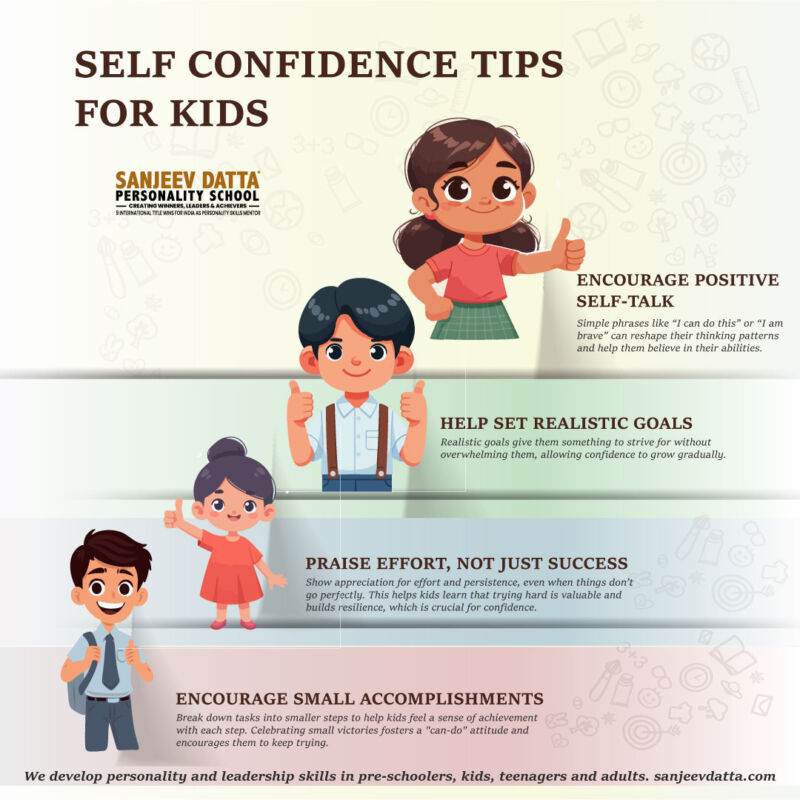
Types of Active Play and Their Unique Brain Benefits
1. Unstructured Free Play: The Gold Standard
Free play – where children direct their own activities without adult intervention – provides unique developmental benefits that structured activities cannot replicate.
Why Free Play Matters:
- Children develop initiative and self-direction
- Creativity flourishes without predetermined outcomes
- Social skills emerge through peer negotiation
- Problem-solving happens organically
Brain Building Through Free Play:
- Enhanced creative thinking and innovation
- Superior social-emotional development
- Stronger intrinsic motivation systems
- Better stress management and resilience
Examples of Valuable Free Play:
- Neighborhood exploration and adventures
- Backyard fort building and imaginary worlds
- Spontaneous games created by children
- Unstructured outdoor time in natural settings
bilingual development benefits for kids
2. Structured Physical Activities: Skill Development
While free play is irreplaceable, structured activities offer complementary benefits through systematic skill development and challenge progression.
Benefits of Structured Activities:
- Systematic skill building and mastery
- Goal setting and achievement experiences
- Discipline and commitment development
- Community and belonging through teams
Choosing Quality Structured Activities:
- Age-appropriate challenge levels
- Emphasis on participation over competition
- Positive coaching focused on growth
- Balance between instruction and active play
Brain Development Through Structure:
- Pattern recognition and skill automation
- Goal-directed behavior and persistence
- Social hierarchy navigation
- Performance anxiety management
3. Social Active Play: Building Emotional Intelligence
When children engage in active play with peers, they develop social-emotional skills while simultaneously building their brains.
Social Play Benefits:
- Reading social cues and body language
- Negotiating rules and resolving conflicts
- Experiencing empathy through shared experiences
- Developing cooperation and teamwork skills
Examples of Social Active Play:
- Group tag games and chase activities
- Team sports and cooperative challenges
- Active playground games requiring collaboration
- Dance parties and group movement activities
Understanding that comprehensive child development requires both physical activity and social-emotional skill building, programs focused on personality development for kids that integrate active play with intentional character development can provide the structured environment where movement, social interaction, and personal growth combine to create well-rounded individuals with strong cognitive abilities and emotional intelligence.
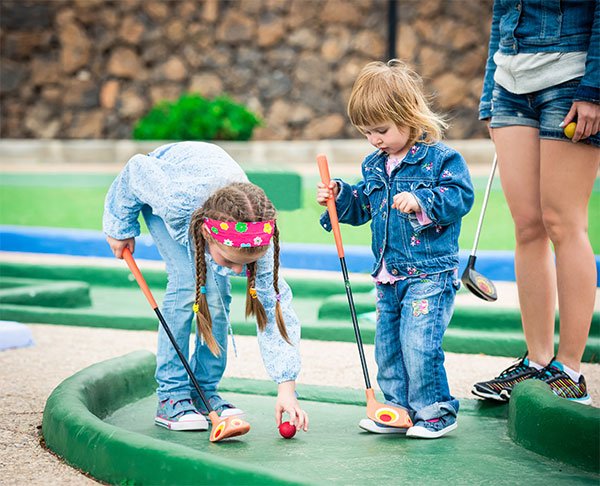
The Screen Time Problem: What We’re Losing
1. The Cognitive Cost of Sedentary Childhood
Modern children spend unprecedented amounts of time sitting, and their brains are paying the price in measurable ways.
Concerning Statistics:
- Average child screen time: 5-7 hours daily
- Recess time: Decreased by 50% in past two decades
- Free play time: Reduced by 75% since 1970s
- Organized sports replacing unstructured play
Brain Development Consequences:
- Delayed executive function development
- Reduced creative thinking abilities
- Weaker spatial reasoning skills
- Decreased attention span and focus
2. Creating Balance in a Digital World
The goal isn’t eliminating screens entirely – it’s ensuring active play receives the priority it deserves in your child’s daily routine.
Practical Balance Strategies:
- “Movement first” rule before screen time
- Active play breaks every 45-60 minutes
- Outdoor time requirements daily
- Screen-free family activity time
- Weekend adventures prioritizing movement
Technology That Supports Active Play:
- Active video games requiring movement
- Apps tracking outdoor exploration
- Virtual challenges encouraging physical activity
- Video calls during active play with distant friends
Creating an Active Play-Friendly Environment
1. Home Setup for Movement Success
Your home environment either facilitates or hinders active play – small changes can make massive differences.
Indoor Active Play Spaces:
- Clear areas for movement and dance
- Indoor climbing or movement equipment
- Sports equipment readily accessible
- Music easily available for dancing
- Obstacle course materials on hand
Outdoor Opportunities:
- Varied equipment encouraging different movements
- Natural spaces for unstructured exploration
- Safe areas for running and active games
- Materials for building and creating
- Invitation to neighborhood play
2. Neighborhood and Community Resources
Expanding beyond your home multiplies active play opportunities exponentially.
Community Resources to Explore:
- Public parks with varied playground equipment
- Nature trails and hiking paths
- Community recreation centers
- Sports leagues and clubs
- School playgrounds during off-hours
Building Play Communities:
- Organizing neighborhood play groups
- Creating walking or biking groups
- Coordinating parent supervision shifts
- Advocating for play-friendly policies
- Connecting with other active families
Overcoming Common Barriers to Active Play
1. “My Child Isn’t Interested in Sports or Physical Activity”
Not all children naturally gravitate toward traditional sports, but every child can benefit from active play suited to their interests and personality.
Alternative Active Options:
- Dance and creative movement
- Martial arts or yoga for kids
- Nature exploration and hiking
- Active imaginative play
- Swimming and water activities
- Skateboarding, biking, or scootering
Finding What Resonates:
- Expose children to diverse activities
- Focus on fun rather than performance
- Allow children to lead activity selection
- Try activities as family rather than solo
- Emphasize personal goals over competition
2. Safety Concerns and Risk Aversion
Modern parents often struggle with balancing safety concerns against children’s need for challenging, sometimes risky play.
Healthy Risk vs. Dangerous Risk:
- Healthy risks involve manageable challenges
- Children learn risk assessment through experience
- Supervised risky play safer than unsupervised desperation
- Injuries from appropriate play rarely serious
Creating Safe Enough Environments:
- Supervise without hovering constantly
- Ensure age-appropriate equipment and spaces
- Allow natural consequences in safe contexts
- Teach safety skills rather than preventing challenges
- Model calculated risk-taking appropriately
3. Time Constraints and Busy Schedules
Modern families face genuine time pressures, but active play doesn’t require hours of commitment to provide brain-building benefits.
Time-Efficient Active Play:
- 15-minute movement breaks between activities
- Active transportation (walking, biking) when possible
- Family active play replacing sedentary family time
- Weekend prioritization of outdoor adventures
- Combining social time with active time
Quality Over Quantity:
- Daily short active periods beat weekly long sessions
- Intensity matters more than duration
- Make existing activities more active
- Integrate movement into daily routines
- Consistency trumps perfection
The Role of Parents in Supporting Active Play
1. Modeling Active Lifestyles
Children learn more from what we do than what we say – your activity levels directly influence your child’s relationship with movement.
Modeling Active Living:
- Engage in visible physical activity
- Express enjoyment during movement
- Choose active family leisure activities
- Discuss benefits you experience from exercise
- Avoid sedentary default behaviors
Family Active Time:
- Evening walks or bike rides together
- Weekend hiking or outdoor adventures
- Active games replacing passive entertainment
- Dance parties and movement challenges
- Sports or activities pursued together
2. Facilitating Rather Than Directing
The best support for active play often means stepping back rather than managing every detail.
Effective Facilitation Strategies:
- Provide materials and opportunities
- Allow child-directed play without interference
- Resist fixing minor conflicts immediately
- Celebrate effort and participation over results
- Create space for both success and failure
Avoiding Common Pitfalls:
- Over-scheduling structured activities
- Constant supervision preventing independence
- Focusing on performance over enjoyment
- Comparing children to others
- Using activity as punishment or reward
Active Play and Academic Success: The Surprising Connection
1. Movement as Learning Strategy
Forward-thinking educators increasingly recognize that movement isn’t a break from learning – it’s a powerful learning tool.
Movement-Based Learning Benefits:
- Information retention improvement through physical association
- Complex concept understanding via embodied experience
- Attention restoration allowing better focus
- Stress reduction improving cognitive performance
Practical Applications:
- Study breaks involving movement
- Walking while memorizing information
- Physical demonstrations of concepts
- Active before focused work sessions
- Movement integrated into homework routines
2. The Homework Dilemma
Excessive homework time often comes at the expense of active play, potentially harming the very academic performance it aims to improve.
Research-Based Recommendations:
- Elementary students: 10 minutes per grade level maximum
- Middle school: 1-2 hours maximum daily
- Active breaks improve homework efficiency
- Movement before homework enhances performance
- Outdoor play shouldn’t be sacrificed for academics
Long-Term Benefits: Active Children Become Healthier Adults
1. Lifelong Health Foundations
The activity patterns established in childhood predict adult health outcomes across physical, mental, and cognitive domains.
Long-Term Physical Benefits:
- Cardiovascular health and fitness
- Healthy weight maintenance
- Bone density and strength
- Reduced chronic disease risk
- Better overall physical function
Cognitive Advantages:
- Maintained executive function into adulthood
- Reduced dementia risk later in life
- Better stress management capabilities
- Enhanced problem-solving abilities
- Greater cognitive reserve
2. Building Active Identities
Children who experience active play as joyful and engaging develop identities as “active people” that persist throughout life.
Identity Development Through Play:
- Self-concept as capable and competent
- Confidence in physical abilities
- Enjoyment of movement for its own sake
- Community connections through activity
- Intrinsic motivation for active living
Comprehensive Development Through Movement
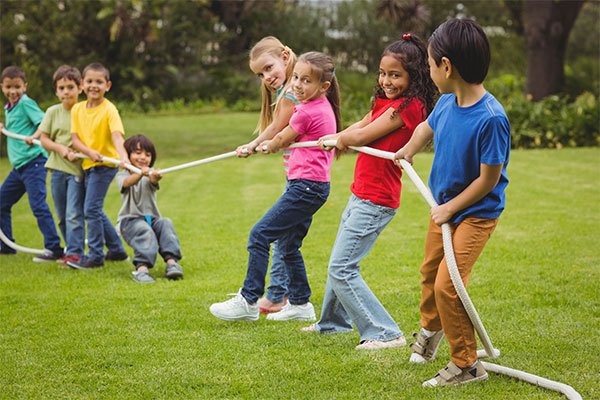
1. Integrating Physical, Cognitive, and Emotional Growth
The most powerful developmental experiences combine physical challenges with cognitive demands and emotional growth opportunities.
Holistic Development Activities:
- Team sports requiring strategy and cooperation
- Adventure activities building courage and resilience
- Creative movement exploring emotional expression
- Complex games demanding multiple skill types
- Social active play developing relationship skills
For families seeking comprehensive approaches that recognize children as whole beings requiring physical, cognitive, and emotional development, enrolling in a well-designed personality development course that integrates active play with character building, emotional intelligence training, and social skill development ensures children receive the holistic support they need for optimal brain development and lifelong success.
2. Building Resilience Through Physical Challenges
Active play naturally provides opportunities for children to experience manageable failures and develop persistence.
Resilience Building Through Play:
- Falling and getting back up
- Losing games and trying again
- Attempting difficult physical challenges
- Overcoming fear through gradual exposure
- Celebrating improvement over time
Transferable Life Skills:
- Growth mindset development
- Frustration tolerance
- Problem-solving under pressure
- Optimism despite setbacks
- Confidence from mastery experiences
Practical Implementation: Starting Today
1. Week One Action Plan
You don’t need elaborate plans or expensive equipment to begin prioritizing active play – start with simple, immediate changes.
Immediate Actions:
- Institute daily outdoor time requirement (30-60 minutes)
- Clear space indoors for movement
- Gather simple active play materials
- Identify nearby outdoor spaces
- Schedule family active time
Setting Expectations:
- Communicate importance to children
- Explain changes and reasoning
- Involve children in activity planning
- Establish consistent routines
- Celebrate initial participation
2. Building Long-Term Active Play Habits
Sustainable change requires systems and habits rather than willpower and constant decisions.
Habit Building Strategies:
- Same time daily for active play
- If-then planning (if homework done, then outdoor play)
- Environment design supporting movement
- Social commitments creating accountability
- Regular reassessment and adjustment
Tracking Progress:
- Monitor activity levels and types
- Notice cognitive and behavioral changes
- Celebrate milestone achievements
- Adjust approach based on what works
- Maintain flexibility and joy
Frequently Asked Questions (FAQs)
Q. How much active play does my child need for brain development benefits?
Research shows that children need at least 60 minutes of moderate to vigorous physical activity daily for optimal brain development. However, the importance of active play extends beyond this minimum – children benefit from multiple shorter activity periods throughout the day rather than a single longer session. Aim for activity breaks every 45-60 minutes during sedentary periods, with a mix of structured activities and unstructured free play for maximum cognitive benefits.
Q. Can organized sports replace unstructured free play?
While organized sports provide valuable benefits including skill development, teamwork, and discipline, they cannot fully replace unstructured free play. Free play develops unique capabilities including creativity, self-direction, social negotiation, and problem-solving that structured activities don’t provide. The ideal approach combines both: structured activities for skill building and free play for creativity and independence. Many experts recommend a ratio favoring free play, especially for younger children.
Q. What if my child prefers indoor sedentary activities like reading or building?
First, recognize that quiet focused activities like reading are valuable and important. The goal isn’t replacing all quiet time but ensuring adequate active play for brain development. Start by finding active pursuits matching your child’s interests – maybe building obstacle courses outdoors, active role-playing games, or nature exploration tied to their favorite books. Gradually increase active time while respecting your child’s personality and preferences. Even naturally sedentary children benefit enormously from regular movement.
Q. How do I balance active play with academic demands and homework?
Research consistently shows that physical activity enhances rather than detracts from academic performance. When time is limited, prioritize active play before homework – it improves focus, memory, and cognitive performance during subsequent academic work. Consider movement breaks during homework sessions, active study techniques, and questioning excessive homework that prevents adequate play time. Many families find that ensuring active play actually reduces total homework time through improved efficiency and focus.
Q. Is screen time really that harmful if it’s educational content?
While educational screen content has value, it cannot replace the brain-building benefits of active play, even when academically enriching. The issue isn’t just content but the sedentary nature and reduced face-to-face interaction. Children need physical movement, three-dimensional spatial experiences, social interaction, and unstructured exploration for optimal brain development. Use screens strategically for specific purposes while prioritizing active play as the foundation of childhood experience.
Q. What about children with ADHD or other conditions affecting attention?
Active physical play is especially beneficial for children with ADHD and similar conditions. Acute physical activity of moderate to vigorous intensity has been shown to improve cognitive functions in children, including those with attention challenges. Movement helps regulate neurotransmitters, improves focus, and provides appropriate stimulation for active nervous systems. Many children with ADHD benefit from frequent movement breaks and active learning strategies integrated throughout their day.
Q. How can I encourage active play in technology-obsessed older children?
Teens present unique challenges but still benefit tremendously from active play. Strategies include: allowing teens to choose their own activities rather than forcing specific options, connecting movement to their interests (dance for music lovers, adventure activities for risk-takers), making active time social by involving friends, using technology to support activity (fitness trackers, active video games), modeling active lifestyles yourself, and honestly discussing brain development research with mature teens who can understand the science.
Q. What if our neighborhood isn’t safe for outdoor play?
Safety concerns are valid, but creative solutions exist. Options include: driving to safe parks or playgrounds, indoor active play at recreation centers, joining supervised community programs, creating indoor active spaces at home, organizing parent-supervised neighborhood play groups, exploring mall walking programs, and advocating for safer community spaces. Even in challenging circumstances, prioritizing creative solutions for active play pays enormous dividends for your child’s brain development and overall wellbeing.
Conclusion: Movement Isn’t Optional – It’s Essential for Brain Development
The importance of active play in childhood brain development isn’t debatable – it’s a neuroscience fact, backed by decades of research and observable in every child who emerges from outdoor play calmer, happier, and ready to focus. While society pushes academics earlier and longer, children’s brains are literally crying out for what they actually need: movement, exploration, challenge, and unstructured time to play.
Your child doesn’t need more tutoring, earlier academics, or additional structured learning to build a better brain. They need exactly what children have always needed – time to run, jump, climb, explore, and play. The neural pathways built through active play create the foundation for every academic skill we want children to develop, from reading comprehension to mathematical reasoning.
Start today. Not tomorrow when schedules clear or next month when weather improves – today. Send your child outside for 30 minutes. Clear space indoors for movement. Walk to the park. Dance in the living room. Chase each other around the yard. Whatever you do, prioritize movement as the essential brain-building activity it is.
The homework can wait. The screens will still be there later. But childhood is fleeting, and the brain-building window for optimal development through active play is time-limited. Your child’s future cognitive abilities, emotional regulation, social skills, and academic success depend on choices you make today about how they spend their time.
Give them the gift of movement. Their brains will thank you, their teachers will notice the difference, and they’ll carry these benefits throughout their entire lives. Active play isn’t a luxury or an afterthought – it’s the single most important thing you can prioritize for your child’s developing brain.
So what are you waiting for? Your child’s brain is ready to grow. Give it the movement it needs.

